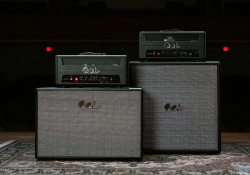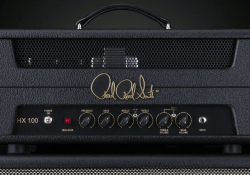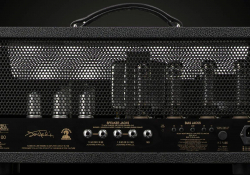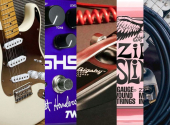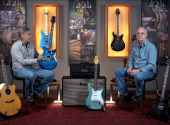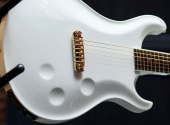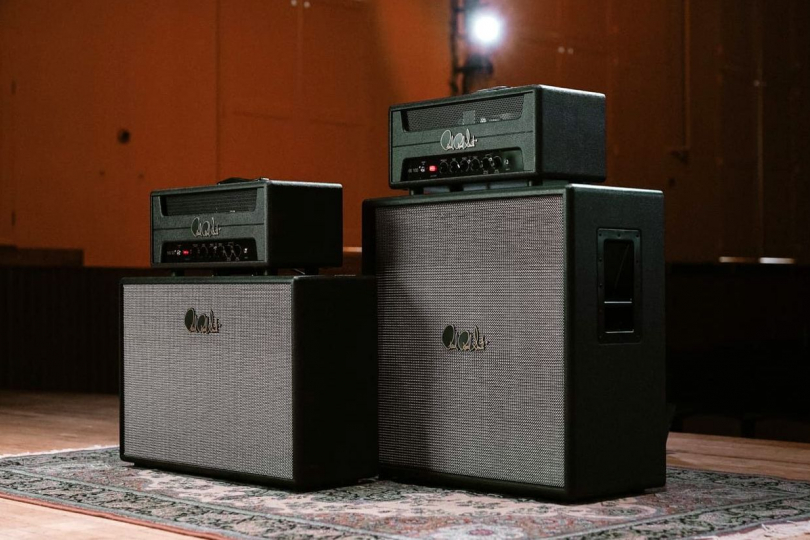
PRS HX Tube Amplifiers: The Authentic Hendrix Sound?
Following the success of the HXDA series of guitar amplifiers, Paul Reed Smith has decided to launch a new series of amplifiers aimed at reincarnating one of the most classic guitar sounds in rock history. The PRS HX 50 and HX 100 all-tube amp heads have been designed to deliver the character and all the nuances of the modified Marshall Super Lead that Jimi Hendrix used during his legendary performance at the 1969 Woodstock festival. The Maryland-based brand has also included two stylish HX 2x12 and HX 4x12 boxes in the series.
Thanks to Paul Allen of Seattle's Museum of Pop Culture (MoPOP) and Hendrix's sister Janie, PRS amp designer Doug Sewell and company head Paul Reed Smith were given the unique opportunity to study this unique and highly valuable object and uncover the secrets of its iconic tone, which remains a benchmark of guitar tone for many players to this day.
In the late 1960s, the Stowatt Marshall was modified by Dave Weyer of West Coast Organ and Amp—at Hendrix's request. In addition to some practical improvements, such as replacing the British-style voltage supply with an American one, Hendrix also commissioned modifications regarding tone optimization in combination with his Stratocasters and other components of the signal path.
This makes the PRS HX series is "a kind of work-in-progress that's frozen in time," as e-zine Guitarplayer quotes Sewell and Reed Smith:
“This is not a painstakingly historical re-creation of the amplifier Hendrix used, but a snapshot in the development of a series of modified amps he came to use on tour and in the studio," says Doug Sewell. "Consideration was given to reliability, compatibility with his effects and guitars, the tones he achieved, and the feel and response of the amp.”
“These HX amps are intended to sound exactly the same as Hendrix’s touring rig, not look exactly the same,” underscores Paul Reed Smith. “We know this is hallowed ground. We feel privileged to reach back into history and bring something special into the current music landscape.”
The PRS HX 50 and 100 are equipped with three JJ ECC803S preamp tubes, a pair or quad of New Sensor EL34EH tubes, and specially made Straight Edge output transformers. On the main panel we find three-band EQs complemented by presets, the original four inputs of channels I and II have been replaced by a single connector with internally bridged channels, corresponding to independent Treble and Bass volume dials.
This solution eliminates the need to connect the various inputs with a cable—the player can more easily select the distortion level and tone color by adjusting the ratio of the individual volume controls. In addition, a lever switch can be used to activate the Mid-gain and a three-position switch to toggle the Bright 1/2 voicing functions. The five speaker outputs are designed for boxes with impedances of 1 x 4, 1 x 8, 1 x 16, 2 x 8 or 2 x 16 ohm, and there is a handy option to adjust the bias of the end tubes.
The aforementioned PRS HX 2x12 and HX 4x12 cabinets are built from poplar plywood covered in black tolex combined with a salt-and-pepper–colored front mesh. Celestion G12H-75 Creamback speakers with 16 ohm impedance were chosen. The HX 2x12 offers 150 watts / 8 ohm, while the 4x12 version doubles both figures. Official prices are in the following ranges: the PRS HX 50 $2900, the HX 100 $3150, the HX 2x12 about $900, the HX 4x12 about $1200.
If you have found an error or typo in the article, please let us know by e-mail info@insounder.org.

